 The author presents an analysis on the global importance of formulation parameters and how our sector can benefit by being clear about this concept.
The author presents an analysis on the global importance of formulation parameters and how our sector can benefit by being clear about this concept.
by M.Sc. Ph.D. Julián A. Restrepo R.*
The overall importance of formulation parameters: For the paint and coating industry in general, the importance of formulation parameters is clear. But at this point, and before continuing, it is important to make a more general analysis of the subject, to properly establish what we mean when we talk about formulation parameters.
A parameter, considering the statistical definition, is a function defined on numerical values that characterizes a population or a model.
For its part, the mathematical definition describes it as a constant or a variable that appears in a mathematical expression and whose different values give rise to different cases in a problem.
Therefore, the term parameter refers to a measure, quantification, guide or guideline, in a given context. But there are many types of parameters, so we will present some examples of these in various fields:
The golden number or golden ratio: (also called golden number, extreme and half ratio, golden ratio, golden ratio, golden half, or divine proportion), represented by the Greek letter φ (phi), is equivalent to the irrational number 1.618033989... in ancient times, Vitruvius established an affinity between man and geometric figures, discovering that the man standing with his arms outstretched can be inscribed in a square, and if he separates his legs he can be inscribed within a circle, which has as its center the navel (see Figure 1. This drawing has become an authentic symbol since it collects several of the key ideas of Renaissance thought: the measured man of all things, beauty adjusted to canons, balance, proportion and so on).
This proportion is found both in some geometric figures and in nature: in the ribs of the leaves of some trees, in the thickness of the branches, in the shell of a snail, in the florets of sunflowers, etc. Likewise, an aesthetic character is attributed to the objects whose measures keep the golden ratio. Some even believe that it possesses a mystical significance. Throughout history, it has been employed in the design of various works of architecture and other arts [1].
Figure 1: Drawing by Leonardo da Vinci, known as "the Vitruvian man", is the most popularized image of the golden ratio
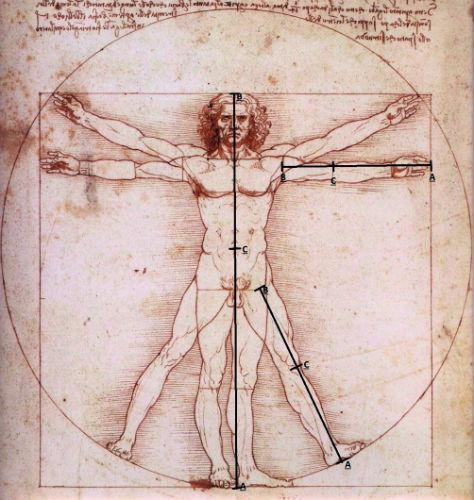
Moore's Law: In 1965, electronics magazine published a paper by Gordon E. Moore (co-founder of Intel), in which he claimed that technology had a future. In the paper, Moore anticipated that the complexity of integrated circuits would double each year and that the trend would continue over the next two decades, with a commensurate cost reduction (see Figure 2). The direct consequence of Moore's law1 is that prices go down at the same time as performance goes up: the $3,000 computer today will cost half the following year and will be obsolete in two years. The fact is that in 26 years the number of transistors on a chip has increased 3,200 times. His prediction has made possible the proliferation of technology around the world, and today it has become the engine of rapid technological change [2].
Figure 2: Graphical representation of historical data and Moore's law
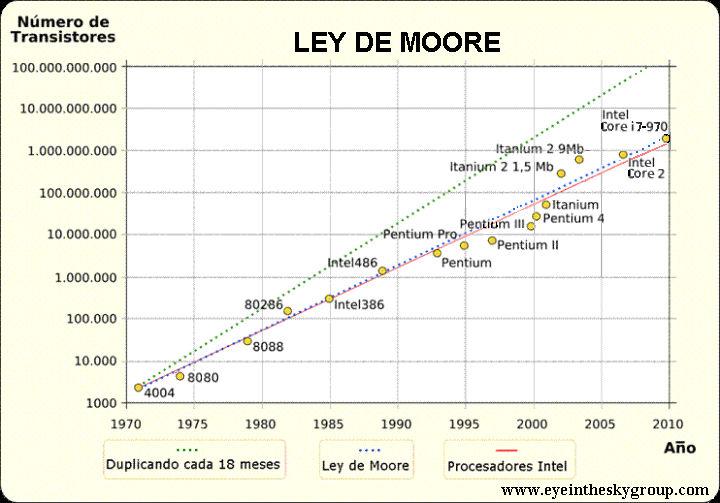
The periodic table of the elements: (also known as periodic system or simply as periodic table) It is an important system that classifies, organizes, segments and distributes the different chemical elements according to their properties and characteristics, arranged in order of their increasing atomic number and in a way that reflects the structure of the elements (establishes a specific order grouping the elements. See Figure 3). It is a fundamental tool for the study of Chemistry, since it helps to understand the properties of matter in terms of the atoms that compose it and the electronic configuration of the elements allows to explain the repetition of the physical and chemical properties. It also allows us to know the similarities between different elements and to understand what can result from the different unions between them [3].
Figure 3: Periodic table of the elements
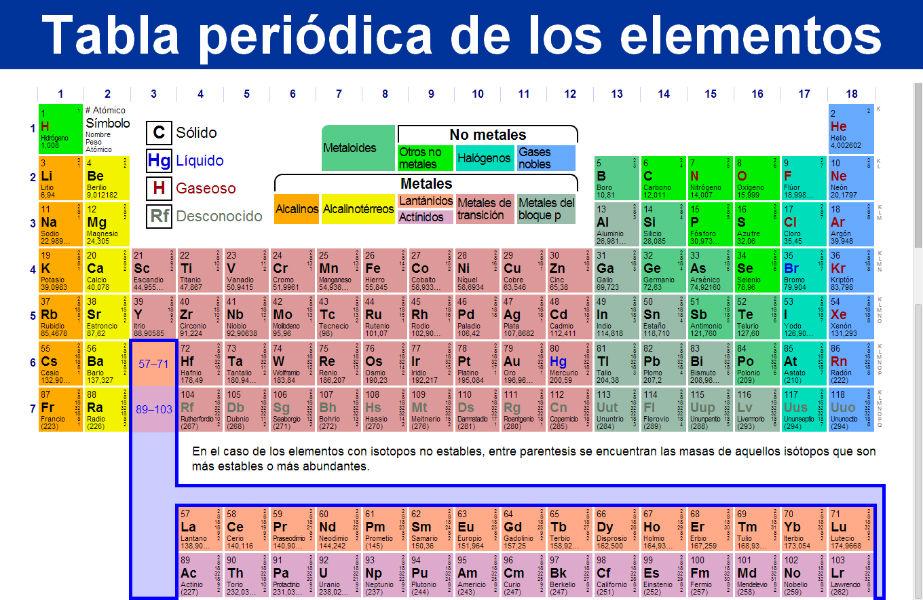
Importance of formulation parameters
The above examples allow us to appreciate the importance of knowing various parameters, which, applied in an appropriate context, allow an increase in the understanding of more complex problems, and being broader, have allowed important advances in various fields of science and technological development.
Therefore, at this point, we can give a broader definition of what we call a parameter, being: a data that is considered essential and indicative to evaluate or assess a certain situation. From a parameter, a certain circumstance can be understood or placed in perspective.
On the other hand and strictly speaking, in our industry, when we talk about formulation parameters, we must talk about several terms:
Formulation relationships: these are numerical values or mathematical relationships that are established between some of the components of the formulation. They are quantifiable and usually have values.
Formulation parameters: are those formulation relationships that have been established and allow an adequate analysis of the coating, to improve its performance. They are quantifiable and usually have values. In other words, they are formulation relationships selected to be employed in the design and formulation of coatings, due to their demonstrated effect on the properties of a particular coating.
Formulation guides: they are established rules (rules of thumb or "rules of experience"), for a certain formulation or system, from experimental data, supplier information, literature, etc. Experimental information can come from systematic analyses (planned experiments, experiment designs, etc.), or random results of the development process, they can even be generated from information collected from the manufacturing process, product Quality Control, application conditions, among others. They are presented in the form of (quantifiable) values, although there are also type guides (material restrictions, restriction of combinations, characteristics, etc.).
Formulation matrices: is the set of data, usually presented in matrix form, as a result of a systematic processing of experimental results, obtained from the analysis of the set of various sources: relationships and parameters of formulation, formulation guides and others, offering a working window for the various components of the formulation (usually know how).
Thus, while several books can present various relationships and formulation parameters, only a few and very specialized provide information on formulation guides, and practically the subject of formulation matrices is for the exclusive use of the R & D departments of paint manufacturing companies, which is why they are considered know-how. To understand it better, very briefly, we can say that:
Formulation Matrices = Formulation Parameters + Formulation Guides
On the other hand, we can go further by considering the information we have in the Formulation Matrices, since from it correlations and models (2D) can be obtained, and depending on the type of data and the relationship between them, we can even obtain response surfaces (3D models).
To do this, we will consider the example of the coating associated with titanium dioxide [4]: We know that the coverage associated with this pigment depends on both the particle size and the wavelength of interest and we can graph the variation of the coverage at different wavelengths (see Figure 4):
Figure 4: Covering power associated with titanium dioxide at different wavelengths: blue (450-495 nm); green (495-570 nm); red (620-750 nm) [5.6].
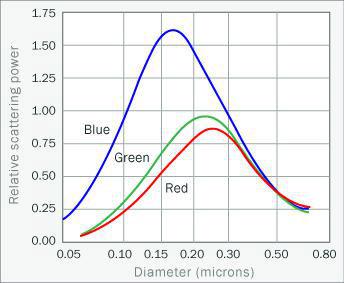
In Figure 4, it can be seen that the maximum coverage of titanium dioxide is obtained when it has a bluish tendency, followed by the greenish and reddish tendencies. But if we analyze in detail the variables plotted in Figure 4, we will observe that this is a 2D graphic representation where it is appreciated that the coverage also presents variation with the wavelength.
Therefore, if you have enough data, you can obtain a broader graphic representation where the variation of the coverage associated with TiO2 is graphed simultaneously against its particle size and wavelength, in which case a graphic representation known as "response surface" would be obtained, because it is a 3D graph that usually presents a surface, as shown in Figure 5:
Figure 5: Dependence of the covering power at different wavelengths and particle size of titanium dioxide [4].
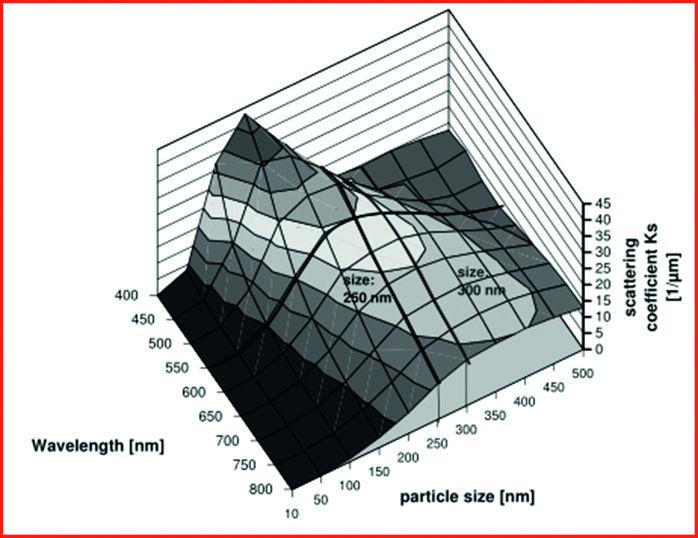
Thus, from Figure 5, if you want to maximize the coverage of TiO2 at a wavelength of 550 nm, it must have a particle size between 250-300 nm, which is the particle size that current commercial titanium dioxides usually present.
Final comments
Among the best known and traditional formulation parameters used in paints, there is the ratio pigment binder (or in English, pigment /binder ratio, Rel. pigment/binder or Rel. p/b) and the concentration of pigment in volume (PVC, for its acronym in English).
Thus, while the pigment/binder ratio can be considered as an old generation parameter, PVC is considered as new generation, basically considering the fact that PVC is formulated as a volume ratio, while Rel. p/b is given as a mass ratio. It should be borne in mind that different scientists demonstrated that the appropriate concentration measurement in dispersions and compounds (such as paints), is given on the basis of concentration in volume [7,8], or more briefly, the formulation parameters on a volume basis better represent the performance characteristics of organic coatings.
From the author's point of view, the subject of formulation parameters is a subject that deserves much more literary space, but the basic objective of this work is to look back and remember the importance it has, not only for the paint and coating industry, but for other areas of knowledge, the understanding that from an adequate and systematic analysis of the formulation of a painting, relationships can be obtained that due to their importance end up constituting what we call parameters, since their influence on the properties of the final coating shows that these properties are not exclusive to a particular type of coating, but constitute the basis for the systematic and generalized analysis of various and different types of formulations, especially those of pigmented organic coatings.
References
[1] (a) http://en.wikipedia.org/wiki/N%C3%BAmero_%C3%A1ureo;
(b) http://webs.adam.es/rllorens/picuad/leonardo.htm
[2] http://es.wikipedia.org/wiki/Ley_de_Moore
[3] (a) http://en.wikipedia.org/wiki/Tabla_peri%C3%B3dica_de_los_elementos;
b) http://definicion.de/tabla-periodica/#ixzz31PvoCo00;
(c) http://www.buenastareas.com/ensayos/Tabla-Periodica-y-Su-Importancia/3387818.html
[4] Tiarksa, F.; Frechena, T.; Kirschb, S.; Leuningera, J.; Melanb, M.; Pfaua, To.; Richterc, F.; Schulera, B.; Zhao, C.-L.; Formulation effects on the distribution of pigment particles in paints; Prog. Org. Coat., 48 (2003), 140–152.
[5] http://www.specialchem4coatings.com/tc/titanium-dioxide/index.aspx?id=whiteness
[6] http://es.wikipedia.org/wiki/Espectro_visible
[7] Bierwagen, G.; Fishman, R., Storsved, T.; Johnson, J., Prog. Org. Coat., 35 (1999), 1-9.
[8] Restrepo, J.A., "An Alternative Way to Analyze PVC and pigment-binder ratio as fundamental formulation parameters." Revista RECubrimientos, No. 5 (2004), 7-13
* M.Sc. Ph.D. Julián A. Restrepo R. PMC Technical Manager of PPG Industries Colombia. [email protected]
























Leave your comment